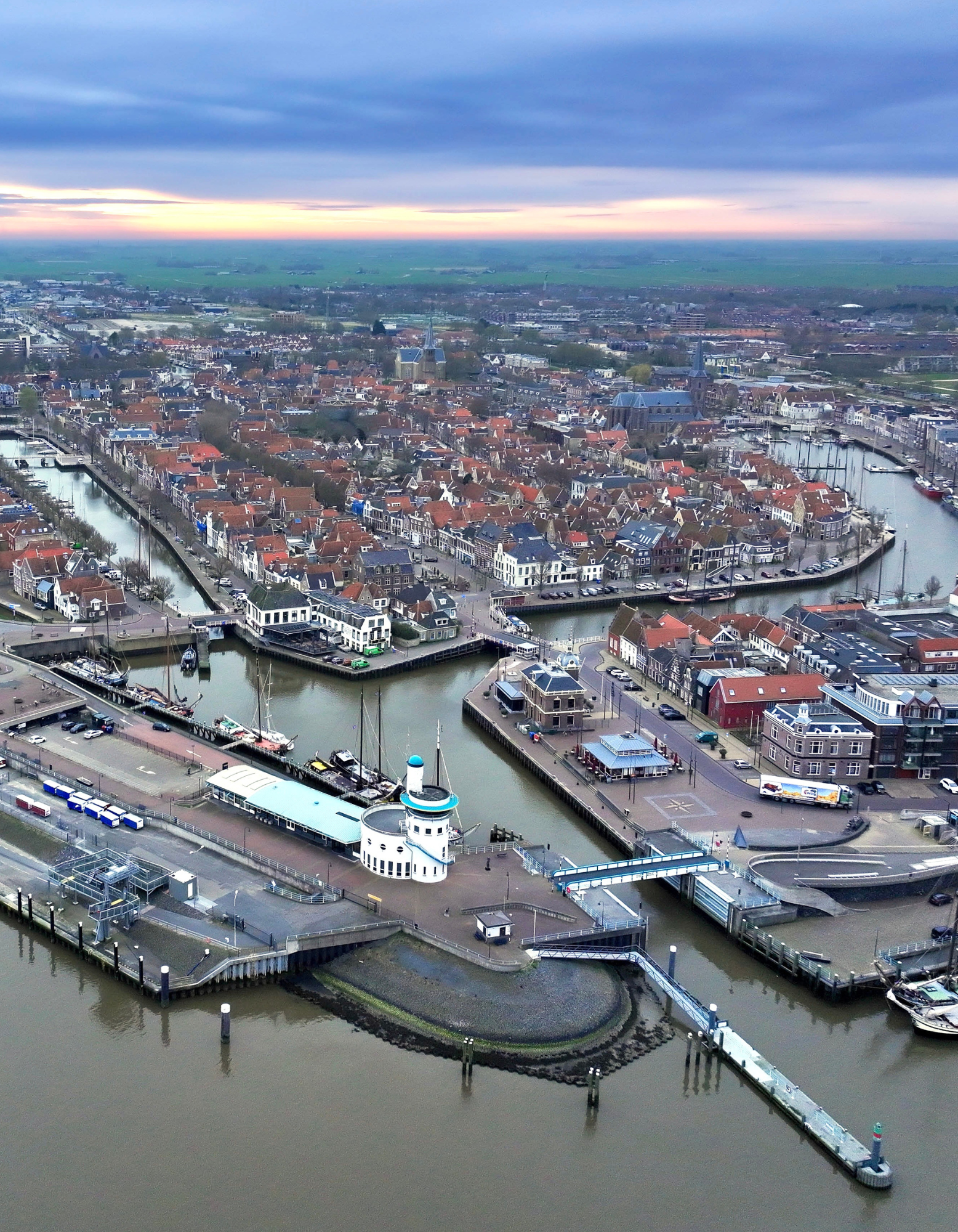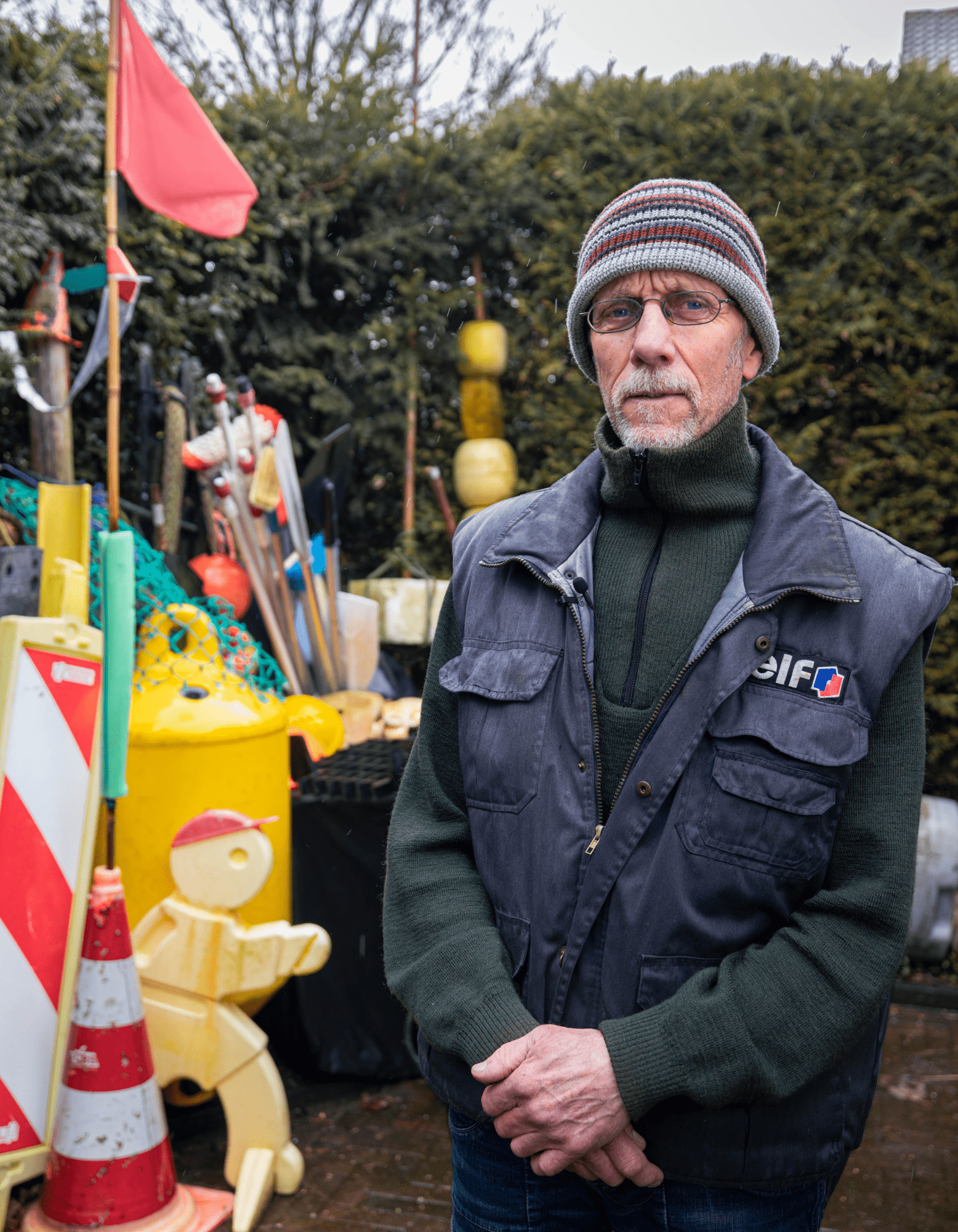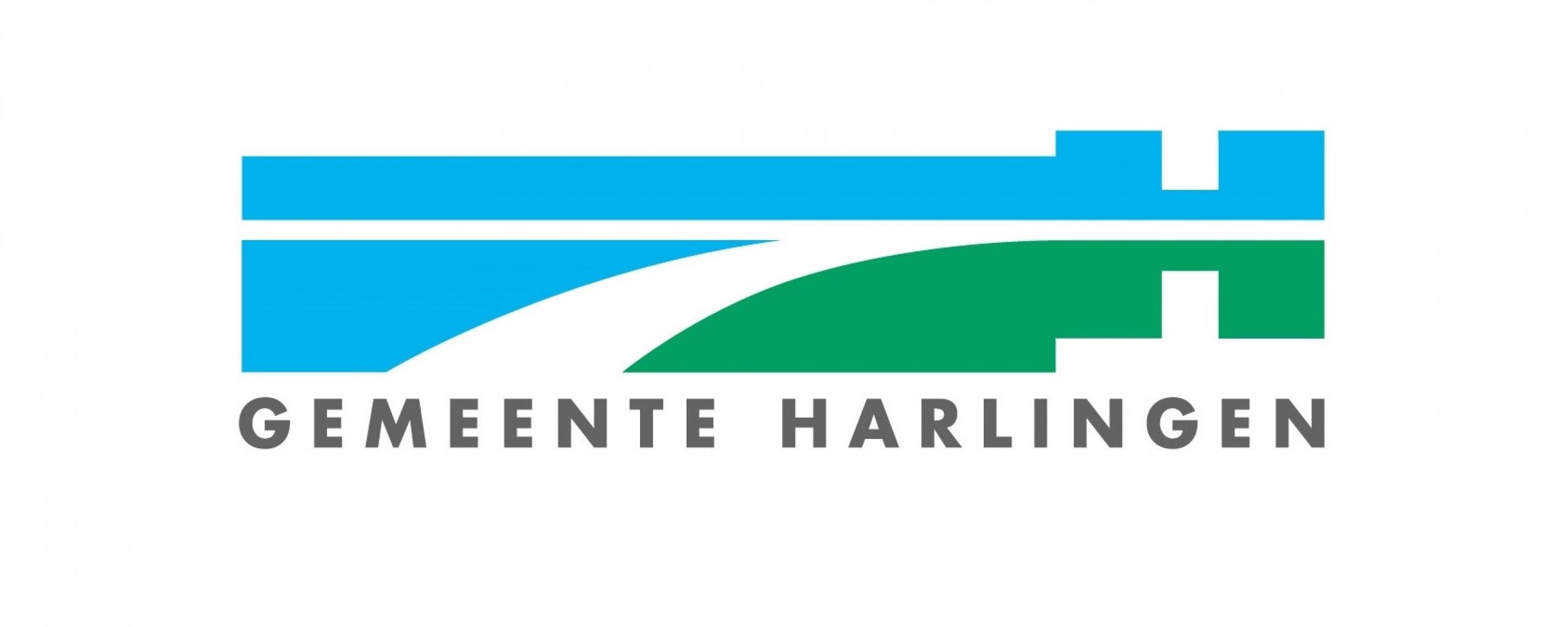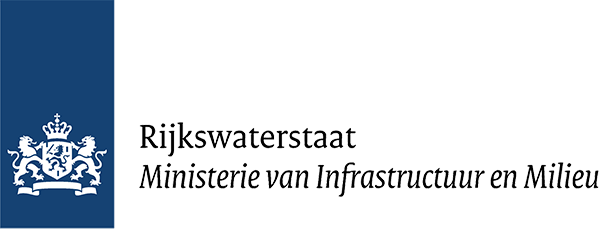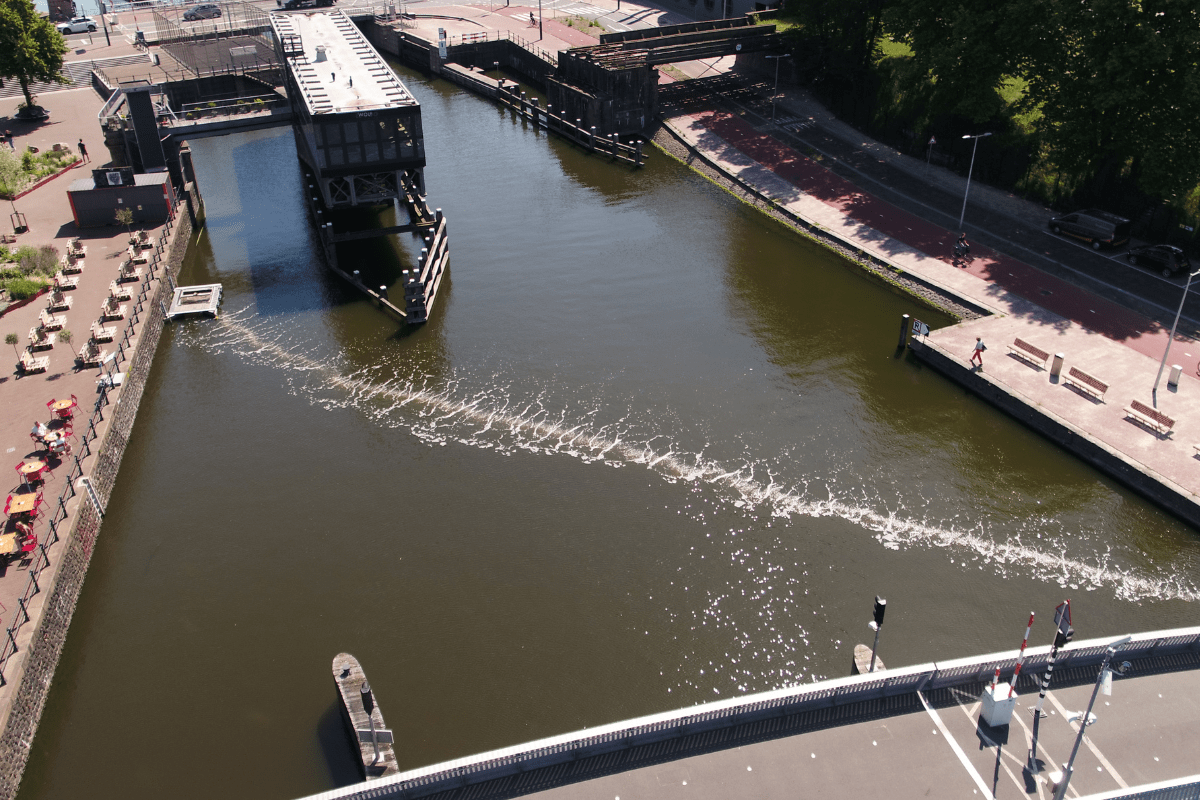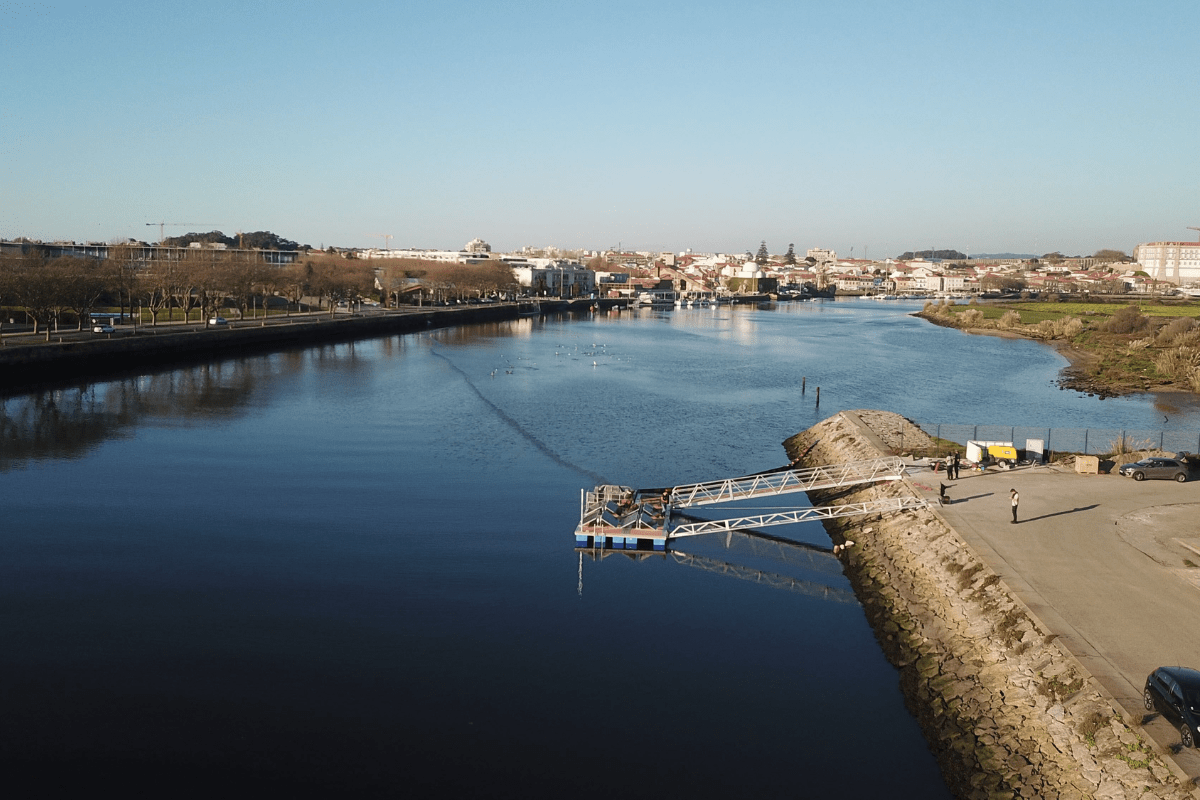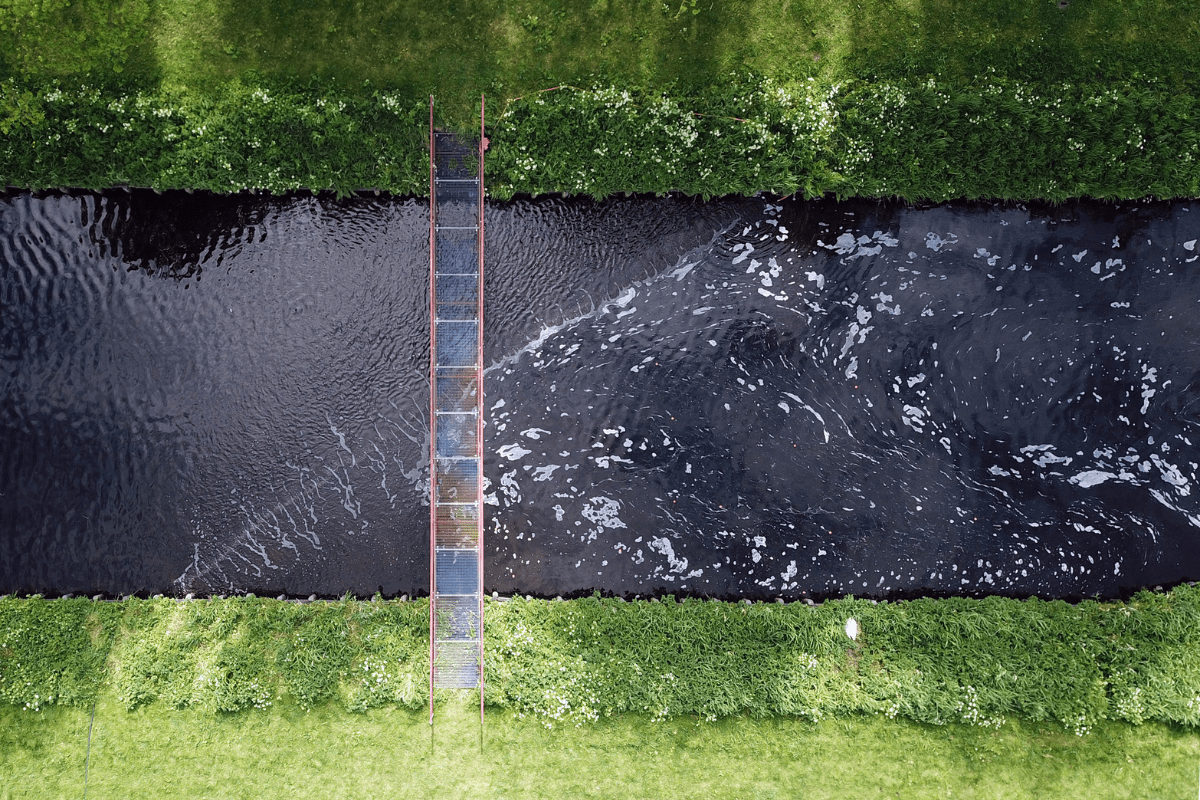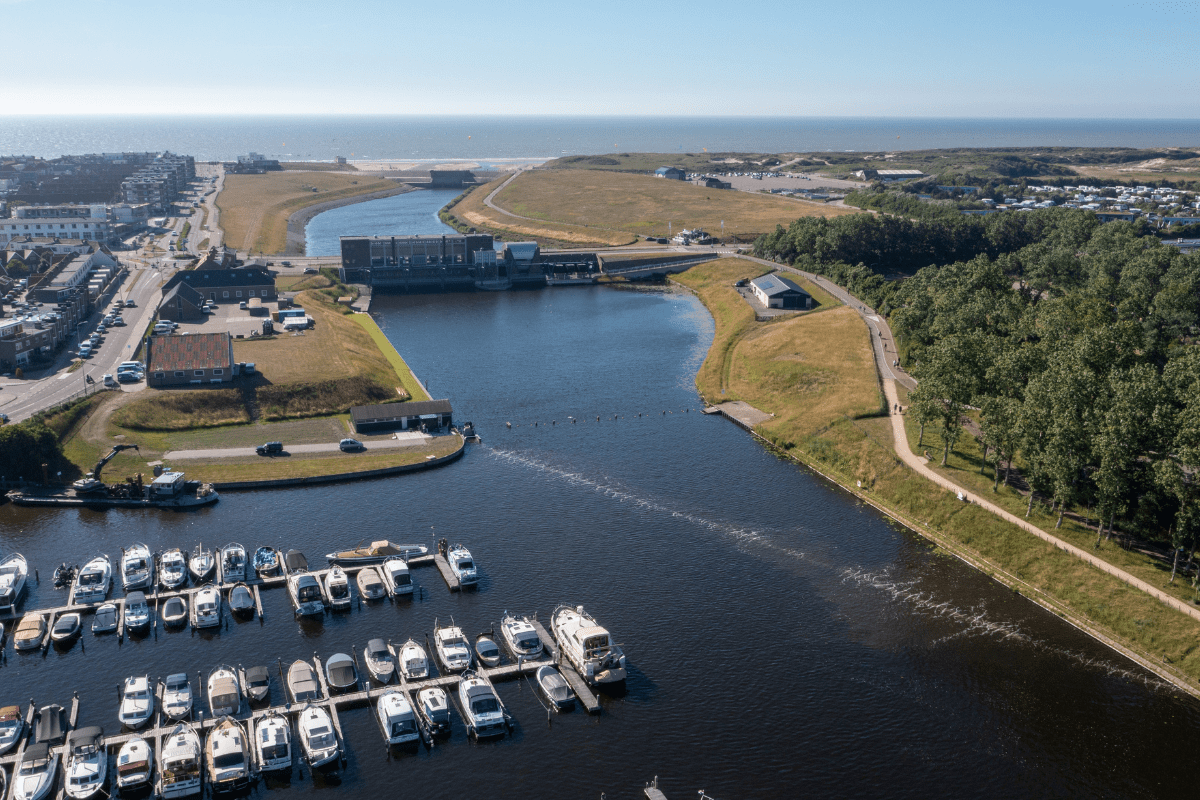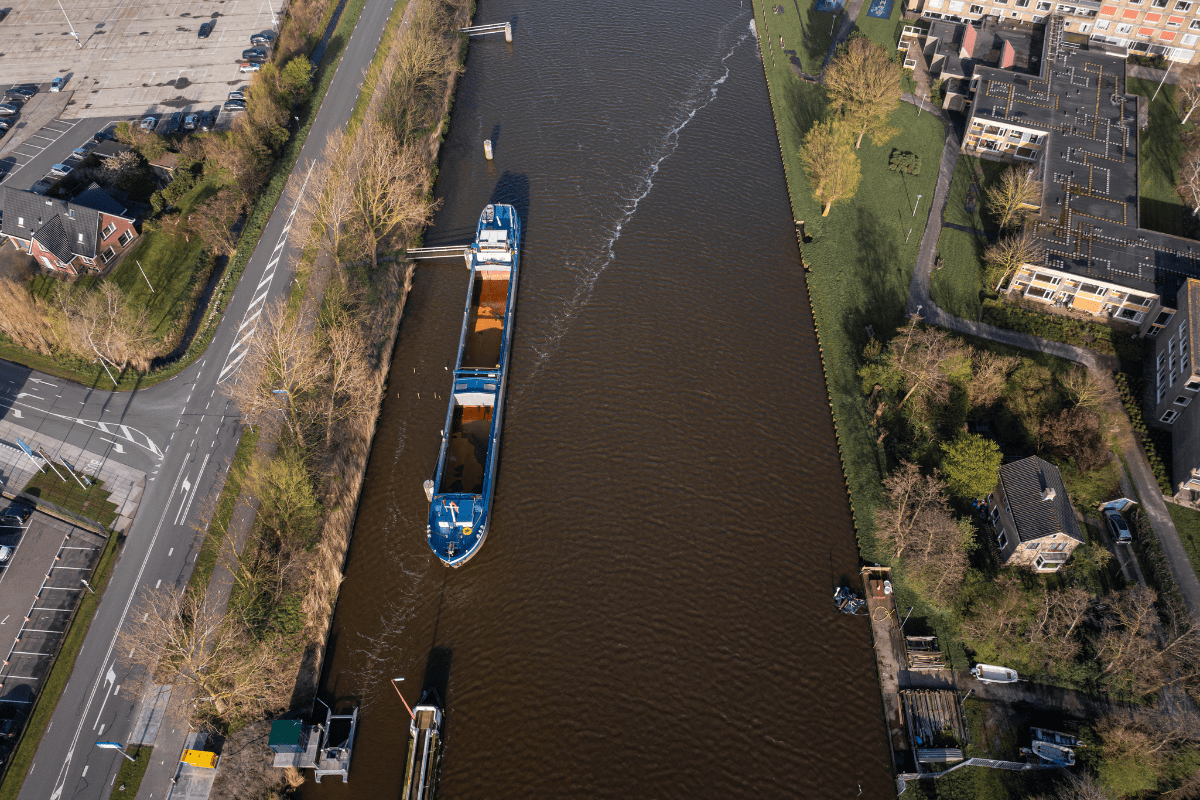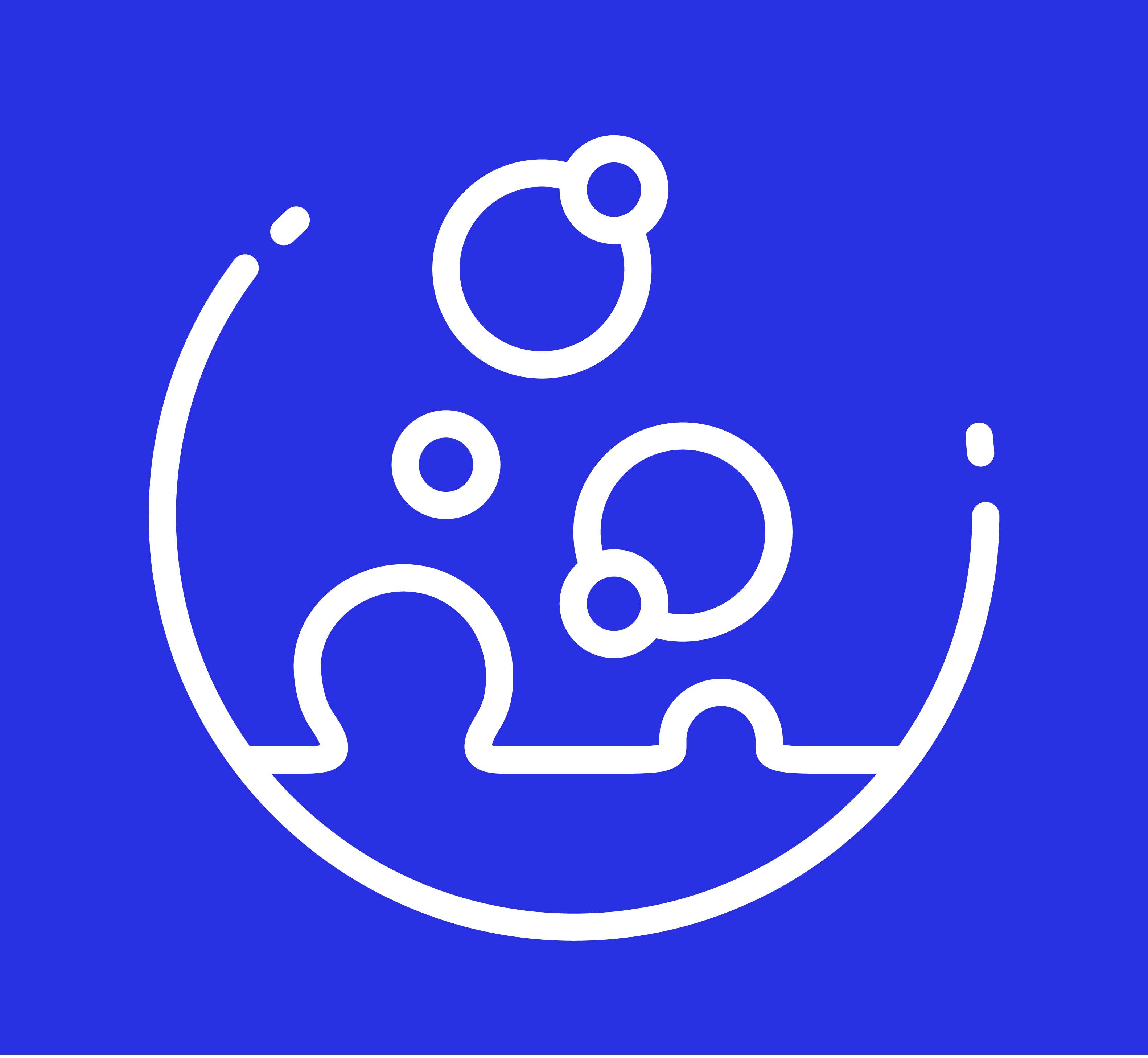BUBBLE BARRIERS
Bubble Barrier Harlingen
In 2024, The Great Bubble Barrier implemented a new Bubble Barrier in Harlingen, Friesland in the north of the Netherlands. The system prevents plastic pollution from flowing into the UNESCO protected Wadden Sea.
This Bubble Barrier was implemented with the support of Gemeente Harlingen, Provincie Fryslân, Rijkswaterstaat, Port of Harlingen, Gemeente Leeuwarden and Gemeente Waadhoeke. This project is sponsored by Waddenfonds, as part of its mission to protect the Wadden Sea.
The Location
Harlingen, gateway to the Wadden Sea
Plastic pollution remains a critical threat to ecosystems across the world.
The Wadden Sea is one of the last remaining large-scale, intertidal ecosystems where natural processes continue to function largely undisturbed. The area is home to numerous plant and animal species, including marine mammals such as the harbour seal, grey seal and harbour porpoise.
As Friesland’s only seaport, Harlingen is the gateway to the Wadden Sea. Bubble Barrier Harlingen will be the first Bubble Barrier to stop plastic pollution from flowing into the Wadden Sea, and will help keep Harlingen’s coastline clean.
The Project
A citizen-initiated project
Henk Prins, a local citizen, has been cleaning Harlingen’s shores for years to bring the issue of plastic pollution in Harlingen to the attention of the local government.
Gemeente Harlingen recognised the importance of tackling the issue and got interested in the implementation of a long-term Bubble Barrier in the coastal town.
Since this initial exploration, many parties including Gemeente Harlingen, Provincie Fryslân, Rijkswaterstaat, Port of Harlingen, Gemeente Leeuwarden and Gemeente Waadhoeke have joined forces to implement a Bubble Barrier in Harlingen. This project has been sponsored by Waddenfonds, as part of its mission to protect the Wadden Sea.
The project shows the power of cooperation between residents and governmental institutions acting together to protect our environment and work towards clean and healthy living conditions.
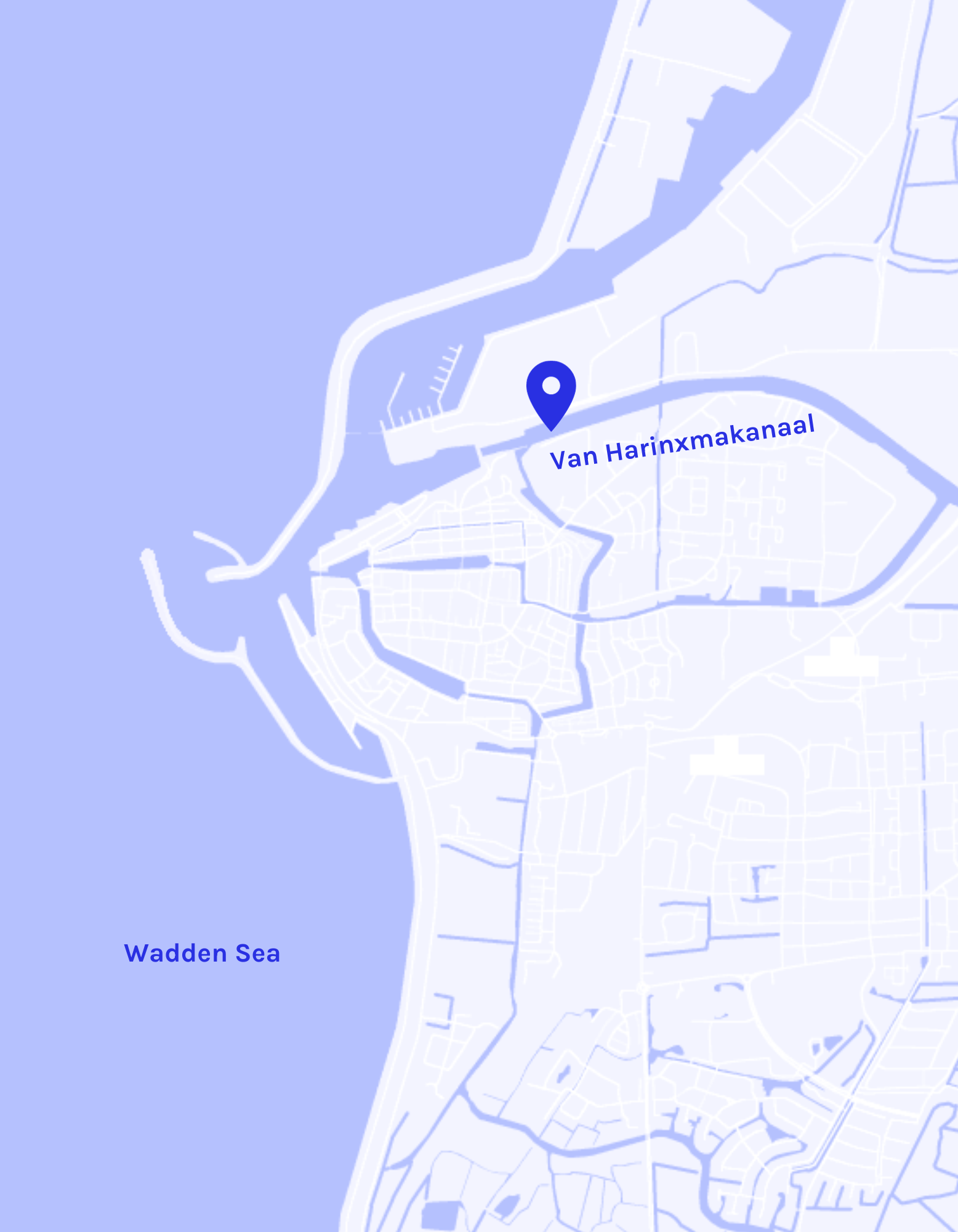
The CANAL
Van Harinxmakanaal
The Van Harinxmakanaal is one of the last stops for plastic pollution before it reaches the Wadden Sea. This canal is vital for shipping, linking the Wadden Sea with the hinterland. The Bubble Barrier catches plastic debris in the canal without hindering the passage of ships.
Bubble Barrier Harlingen not only combats plastic pollution, it also provides an opportunity for additional awareness about the problem among residents and passers-by by placing an information board on-site.
Previous research showed that fish easily pass through the bubbles or under the catchment system. Because fish behaviour is complex and varies from one waterway to another, research is being conducted on fish behaviour around the bubble curtain by ATKB and Wageningen Marine Research.
THE Process
Project phases
Bubble Barrier Harlingen is planned to be fully operational by summer 2024.
The project will be executed in the following phases:
THE Process
Project phases
Bubble Barrier Harlingen is planned to be fully operational by summer 2024. The project will be executed in the following phases:
Phase 1 - Feasibility Study
Before implementing a Bubble Barrier, we conduct research at the location with all stakeholders to ensure optimal placement, alignment with stakeholders, high quality and secure performance.
During the Feasibility Study, we make an initial design of the system, assess permit requirements and map total project costs.
Phase 2 - Realisation
In this phase, we will perform additional measurements on-site if required and finalise the design based on our research and permit requirements.
After permit approval, we will install the Bubble Barrier on site. The implementation will be celebrated with an official launch where all local and (inter)national stakeholders will meet.
Phase 3 - Operation & Maintenance
In this phase, the Bubble Barrier will be fully operational and make an impact by catching plastics 24/7. We put in place a communication plan with local NGOs and stakeholders and use the Bubble Barrier as a tool to increase awareness around plastic pollution.
Phase 4 - Research & Monitoring
Together with our partners and local stakeholders, we will conduct research on the type and amount of plastic waste captured post-installation, as well as research into fish behaviour. With this insight, we can contribute to new policies concerning plastic pollution.
The BUBBLE BARRIER SYSTEM IN VAN HARINXMAKANAAL
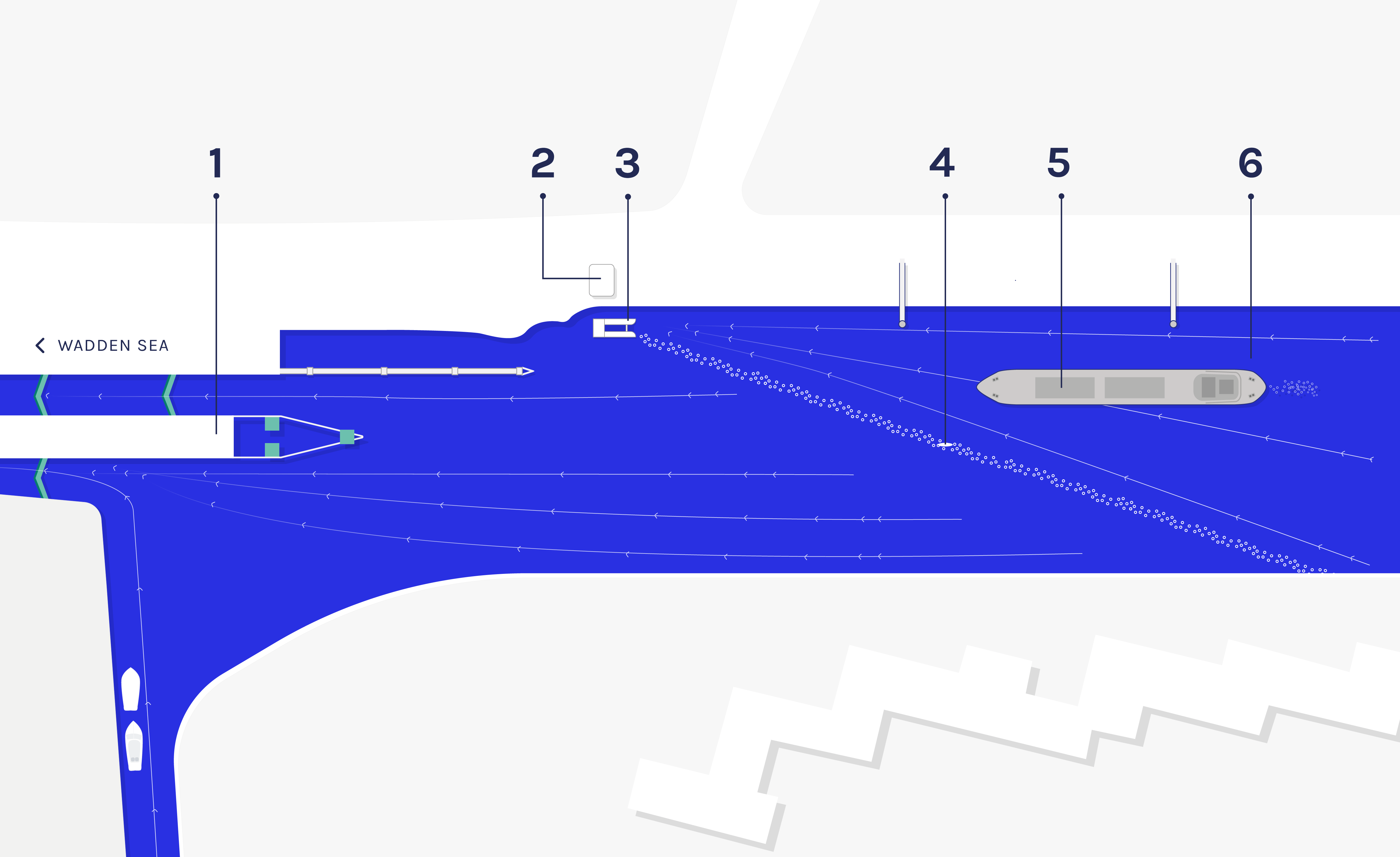
1. Tsjerk Hiddessluizen
Tsjerk Hiddessluizen are shipping locks in Harlingen and are of major importance for inland navigation reaching the Wadden Sea.
2. Compressor
An electric compressor supplies compressed air for the Bubble Barrier and is placed in a sound-insulated container.
3. Catchment System
The floating Catchment System retains the plastic catch until removal.
4. Bubble Barrier
The Bubble Barrier is placed diagonally in the river, in a precisely calculated angle for the highest possible capture of plastics.
5. Boat traffic
Boats can pass through the Bubble Barrier without hinder.
6. Water from van Harinxmakanaal
Water with plastic waste in the Van Harinxmakanaal flows towards the Bubble Barrier.
Bubble Barrier Harlingen partners
The only key to solving riverine plastic pollution is collaboration.
Bubble Barrier Harlingen is made possible by:
Press and Media
Access the full Press Kit below or get in contact with our press team.
To stay up to date about other bubbly projects you can also sign up to our press list.
VIEW MORE PROJECTS
Never enough bubbles
Get inspired by other Bubble Barrier locations!

